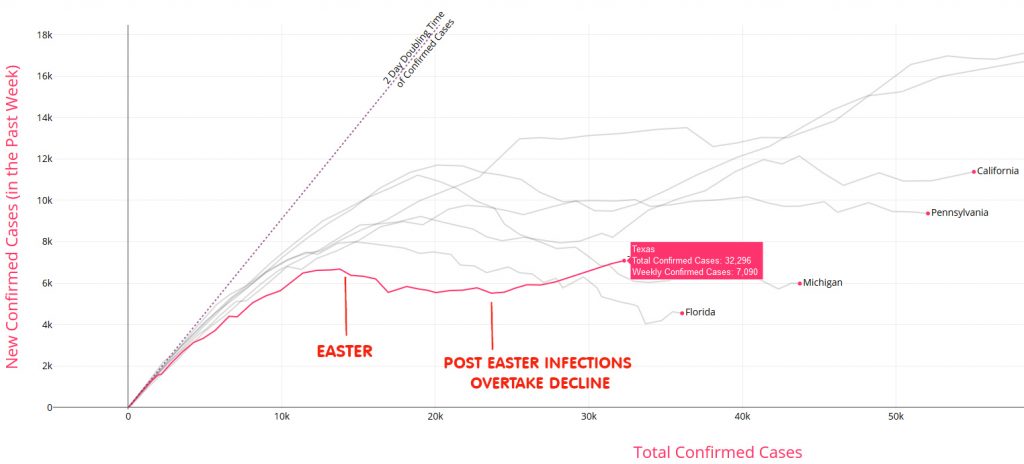Today, Texas is living in denial. In a month, its people will be paying the price.

Back in March, when Harris County unexpectedly cancelled the Houston Livestock & Rodeo, residents were taking things seriously. SARS-Cov-2, the virus that causes COVID-19 has a slow incubation time, but the numbers don’t lie when you plot them. Slowly, new confirmation rates started growing at a slowing rate as the virus burned through the supply of infected but not yet ill people. Then, by the first week of April, the growth of new cases flattened, then actually started to drop.



